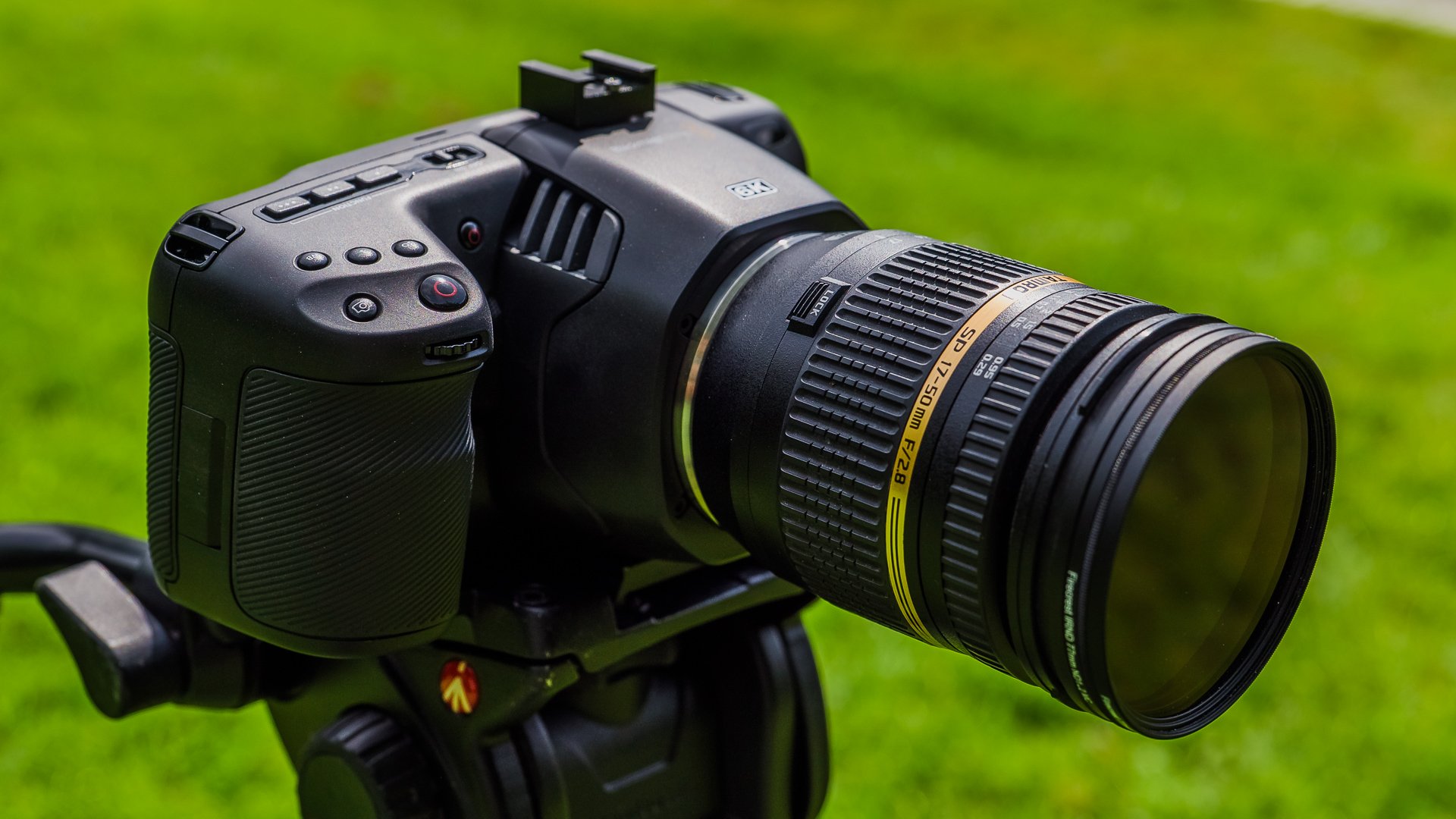
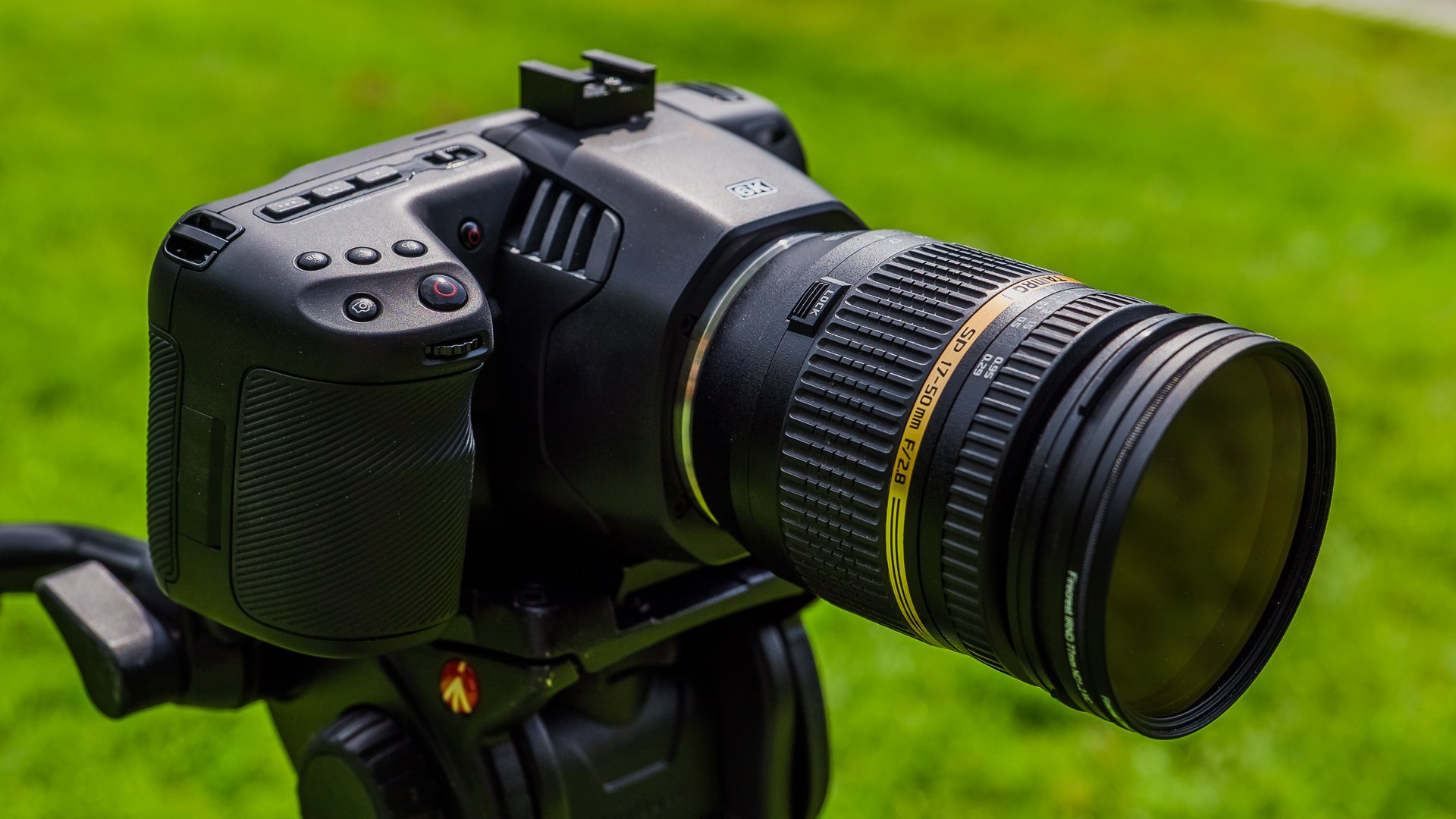
Review: The BMPCC 6K was perhaps the most unexpected announcements we've had this year. Here's our look at Blackmagic Design's latest compact cinema camera in the first part of a two-part review.
What's in a K? As it turns out, quite a lot. The original Pocket Cinema Camera 4K went down a storm. So well in fact that it was back ordered for what seemed like an eternity. But now we have a new 6K model, with Blackmagic Design offering to allow people with the 4K on order to switch to the new model by paying the difference.
On paper the jump from 4K to 6K doesn't sound like much, but when you look at what those figures really mean you realise just how much more data there is. 4K is roughly equivalent to a 9MP stills camera. Nice, but you wouldn't blow it up to hang it on your wall. 6K on the other hand equals a whopping great 18MP, which is similar to most mid-level DSLRs or mirrorless models.
So why go to 6K? Better 4K is the general answer. There's a reason why Panasonic made the EVA1 a 5.7K camera. Once the information from the sensor is debayered it guarantees a true 4K image at the end. On the other hand if you start with a single 4K sensor, after the debayer process you will still have a very high resolution image, depending on how well it is done, but nature of the game means that it will be less than 4K in terms of final resolved resolution, even if the actual picture dimension is "4K". Thus the BMPCC 6K will allow a higher quality true 4K output at the end of the pipeline.
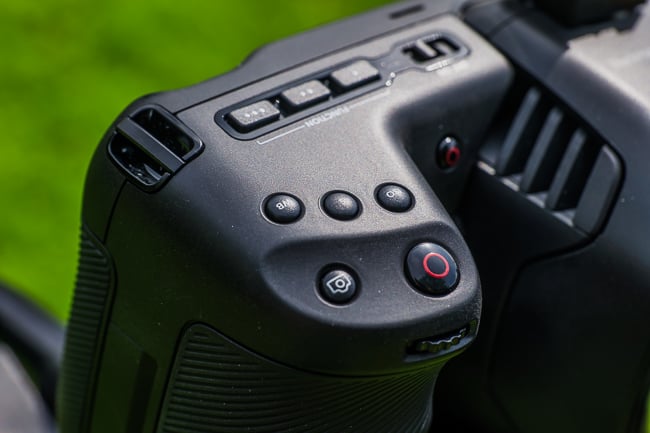
Overall design and control layout matches the original 4K model perfectly
Design
The design of the BMPCC 6K is pretty much exactly the same as the 4K version, except for a much larger lens turret to accommodate the new EF mount and bigger S35mm sized sensor. It's made from the same materials (a lightweight composite), and it has exactly the same inputs: a single mini-XLR, 12V in, HDMI out, 3.5mm headphone jack, and USB-C port for SSD connectivity. Recording is either to SD, CFast 2.0, or SSD.
I covered this in detail in my BMPCC 4K review, but to summarise, the camera is built in such a way that it marries strength with lightness.
I have heard some people complaining that it doesn't 'feel' robust. There is a difference between having a feeling about something and the actual reality of the situation. An all metal body makes a camera much heavier, not a trait you want in something that is being built to be as portable as possible. Personally I like the finish on the BMPCC cameras. if I did have a complaint it's that the rubber port covers do get in the way a bit, and you'll probably remove them to save your sanity, even if they do protect the connections from dust.
The controls are laid out in exactly the same way as the 4K model, too. This is one area where I am reminded each and every time I use a mirrorless hybrid, that Blackmagic Design really put a lot of thought into usability. The BMPCC 6K is much easier to use for video than most hybrids simply because it has been designed from the outset to be used for that purpose.
The setup menus are easy to navigate, and as I keep pointing out, they are the best designed in the business, and the physical buttons are both straightforward and well spaced out. You could be from another planet and you'd be able to work out how to use it.
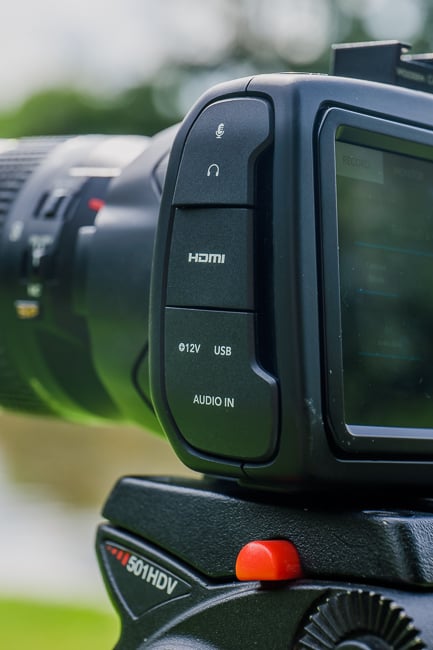
Rubber covers protect the various ports, but if you own the camera, these can be pulled out as they can be annoying
Lens mount
The BMPCC 6K uses an EF mount. A fact which has created all sorts of online discussion. I'll summarise this quickly by saying that E-Mount isn't available to third parties, L-Mount requires becoming part of the L-mount Alliance, Z-Mount belongs to Nikon and it is doubtful it would license it, and RF mount is new and doesn't have a huge number of lenses available yet, and they are pricey.
EF isn't going away quickly. There's a lot of lenses out there, including vintage ones that can be adapted. It is quite simply a non-issue. No matter what mount BMD decided to put on there, there would be people complaining that they needed to purchase new glass. EF is by far the most popular version of the URSA sold, as well as being the mount of choice for popular cameras like the C200. The world won't stop revolving. And here's another thing. As EF is phased out, think of all the bargain glass that will be out there!
Using the BMPCC 6K
Using the 6K Pocket is almost exactly the same as the 4K. It was nice to be able to clip on my existing EF glass, and my vintage Pentax glass without the need for a speed booster. There are slightly different options for recording, which you'd expect. And this is where the differences between the 4K and 6K model appear.
If you want to record 4K BRAW, I'm afraid you're out of luck. In BRAW modes you are restricted to 6K, 6K 2.4:1, 5.7K 17:9 (sensor windowed), 3.7K Anamorphic (coming in a firmware update to the 4K model as well), and 2.8K 17:9 (sensor windowed). It's only in ProRes modes that 4K DCI, 4K UHD, and HD resolutions are opened up. This means that if shooting in BRAW is your preferred shooting method, you need to be ready for the increase in data management.
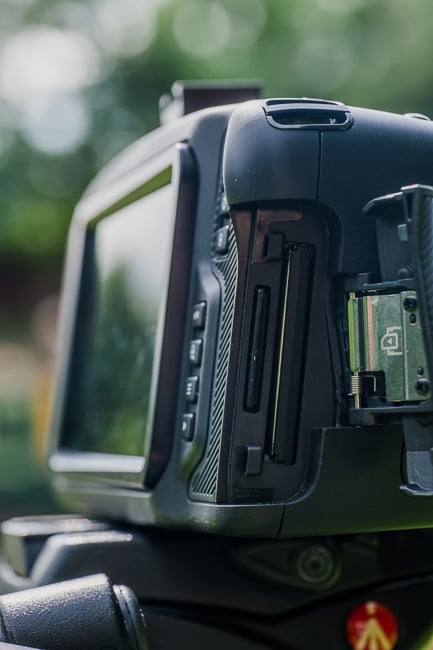
Card slots are as per the 4K model. One SD slot, and one CFast 2.0
These differences in both shooting modes and lens mounts are why the 4K has not been outmoded by the new 6K model. The 6K model buys you convenience by not needing to use lens adaptors, more depth of field control, and a theoretically better final 4K output. The BMPCC 4K on the other hand may well be more suited to shooting wildlife for instance, where shallower depth of field might be a hindrance, documentary, and if you want to vary up your glass, such as using PL or C mount lenses.
If you are going to be using your BMPCC 6K for day to day jobbing, it will need to be rigged a bit, perhaps using a cage such as one from Tilta. The rear monitor is very large, bright, and sharp, but it cannot be angled, so you might need to invest in either an EVF or a 5" monitor.
Battery life is another area that is still an issue, with most lasting under an hour. Canon E6 style batteries are easy to get hold of, but you can literally watch the voltage decreasing like a clock going backwards. So just like the 4K you will need to either invest in a lot of batteries, Blackmagic's own BMPCC battery grip, or preferably something like one of the Tilta NP-F970 or V-lock battery solutions. Doing it the latter way with the addition of a cage means that your camera will still look like a single unit rather than a camera Frankenstein. What it won't be is pocket sized. But it will be a lot smaller than pretty much every other dedicated video camera out there, not including mirrorless cameras obviously.
On that size front, despite the Pocket 6K not being super compact any more, I would wager you that I could fit it into a backpack much more comfortably and with less weight than a 'traditional' cinema camera, even with accessories. In fact there's no denying it.
Coming up in the next part, picture quality, slow motion, and what the 6K means for 4K owners. Read part 2 here.
Tags: Production


Comments